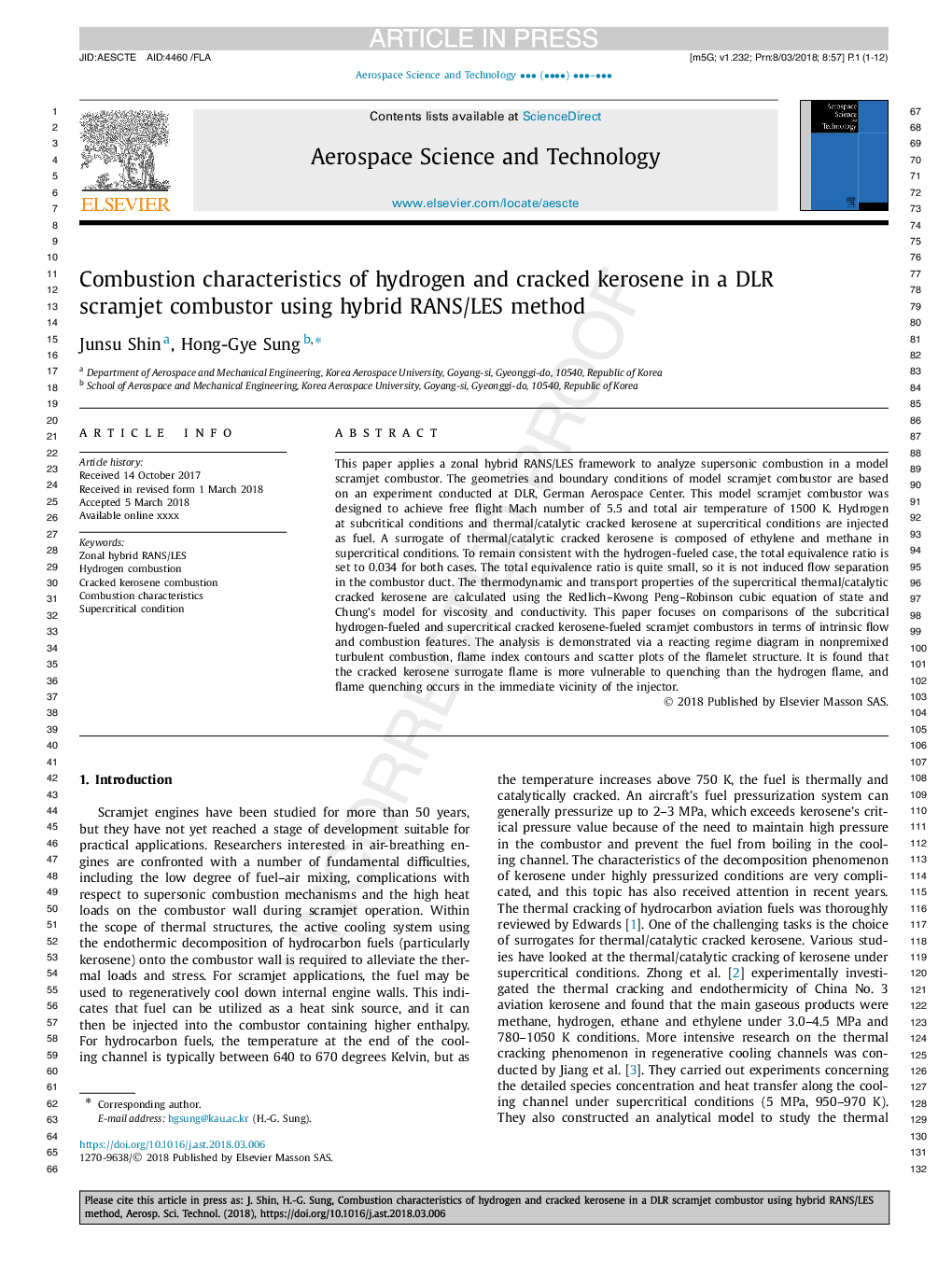| Article ID | Journal | Published Year | Pages | File Type |
|---|---|---|---|---|
| 8057297 | Aerospace Science and Technology | 2018 | 12 Pages |
Abstract
This paper applies a zonal hybrid RANS/LES framework to analyze supersonic combustion in a model scramjet combustor. The geometries and boundary conditions of model scramjet combustor are based on an experiment conducted at DLR, German Aerospace Center. This model scramjet combustor was designed to achieve free flight Mach number of 5.5 and total air temperature of 1500 K. Hydrogen at subcritical conditions and thermal/catalytic cracked kerosene at supercritical conditions are injected as fuel. A surrogate of thermal/catalytic cracked kerosene is composed of ethylene and methane in supercritical conditions. To remain consistent with the hydrogen-fueled case, the total equivalence ratio is set to 0.034 for both cases. The total equivalence ratio is quite small, so it is not induced flow separation in the combustor duct. The thermodynamic and transport properties of the supercritical thermal/catalytic cracked kerosene are calculated using the Redlich-Kwong Peng-Robinson cubic equation of state and Chung's model for viscosity and conductivity. This paper focuses on comparisons of the subcritical hydrogen-fueled and supercritical cracked kerosene-fueled scramjet combustors in terms of intrinsic flow and combustion features. The analysis is demonstrated via a reacting regime diagram in nonpremixed turbulent combustion, flame index contours and scatter plots of the flamelet structure. It is found that the cracked kerosene surrogate flame is more vulnerable to quenching than the hydrogen flame, and flame quenching occurs in the immediate vicinity of the injector.
Related Topics
Physical Sciences and Engineering
Engineering
Aerospace Engineering
Authors
Junsu Shin, Hong-Gye Sung,
